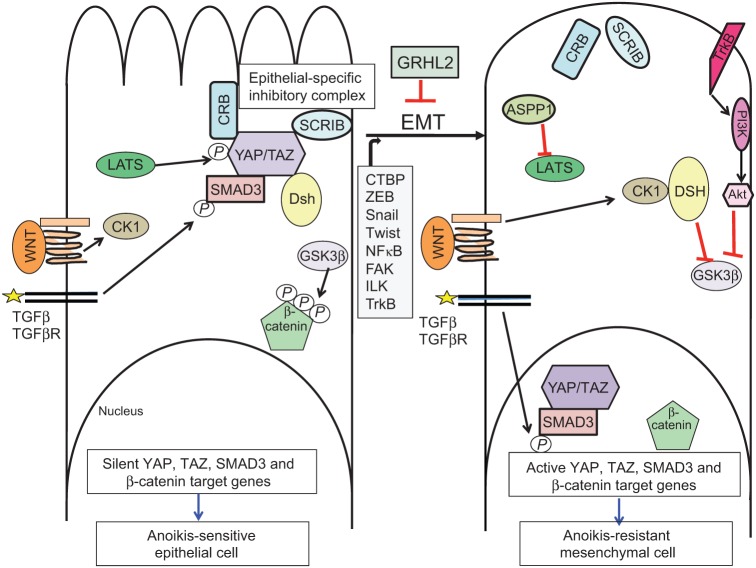Fig. 3.
The epithelial specific cell polarity proteins and maintain anoikis sensitivity by regulating the Hippo, Wnt and TGF-β pathways. In normal, interacting epithelial cells (left panel), the cell polarity complexes, crumbs (Crb) and scribble (Scrib) stimulate the phosphorylation of YAP and TAZ through the LATS kinase. This maintains YAP and TAZ in the cytoplasm, sensitizing cells to anoikis. In addition, cytoplasmic YAP and TAZ interact with Smad3 and prevent its nuclear translocation, even in the presence of active TGF-β receptors. Furthermore, cytoplasmic TAZ interacts with disheveled (Dsh), inhibiting canonical Wnt signaling. Expression or activation of CTBP; ZEB1/2,Snail, Twist, FAK, ILK, NF-κB or TrkB induce EMT (right panel), which – in turn – compromises cell polarity complexes, promotes the nuclear translocation of YAP, TAZ and Smad3, and induces expression of cell survival genes. The absence of cytoplasmic TAZ allows Dsh to be activated by CK1, which inhibits glycogen synthase kinase 3 β (GSK3β), thus allowing β-catenin to transactivate pro-survival genes in the nucleus. Alternatively, the Akt–GSK3β–β-catenin axis can be stimulated through activation of TrkB.

